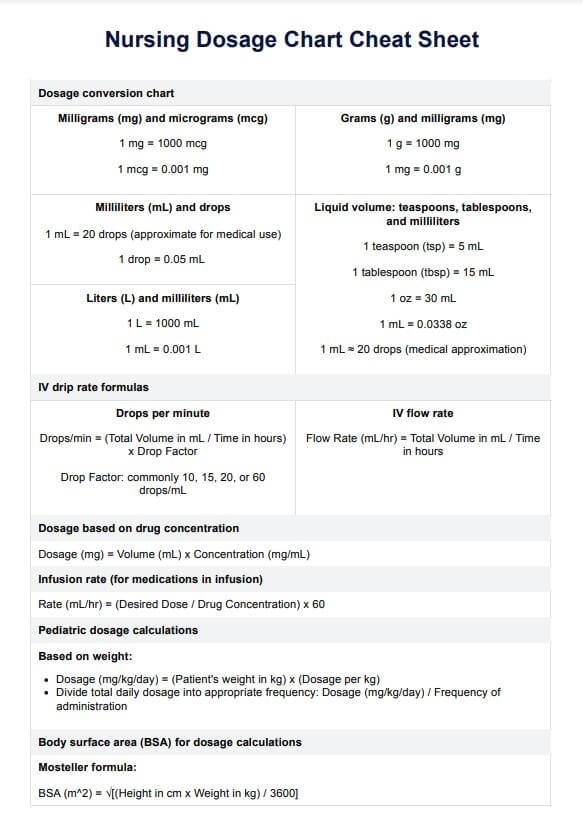The Mosteller formula, a widely used universal formula that calculates body surface area (BSA): BSA (m²) = √[(height in cm x weight in kg) / 3600] to determine drug dosages, especially for patients undergoing chemotherapy.

Nursing Dosage Chart Cheat Sheet
Take advantage of this Nursing Dosage Chart Cheat Sheet, a quick reference tool for accurate medication dosage calculations/conversions!
Use Template
Nursing Dosage Chart Cheat Sheet Template
Commonly asked questions
Understanding infusion rate calculations is crucial in nursing to ensure the accurate and safe administration of IV fluids and medications. It also helps prevent underdosing or overdosing.
To convert ounces to milliliters, multiply the number of ounces by 29.57. For instance, 2 ounces equals approximately 59.14 milliliters. This conversion is essential for accurate medication administration.
EHR and practice management software
Get started for free
*No credit card required
Free
$0/usd
Unlimited clients
Telehealth
1GB of storage
Client portal text
Automated billing and online payments











